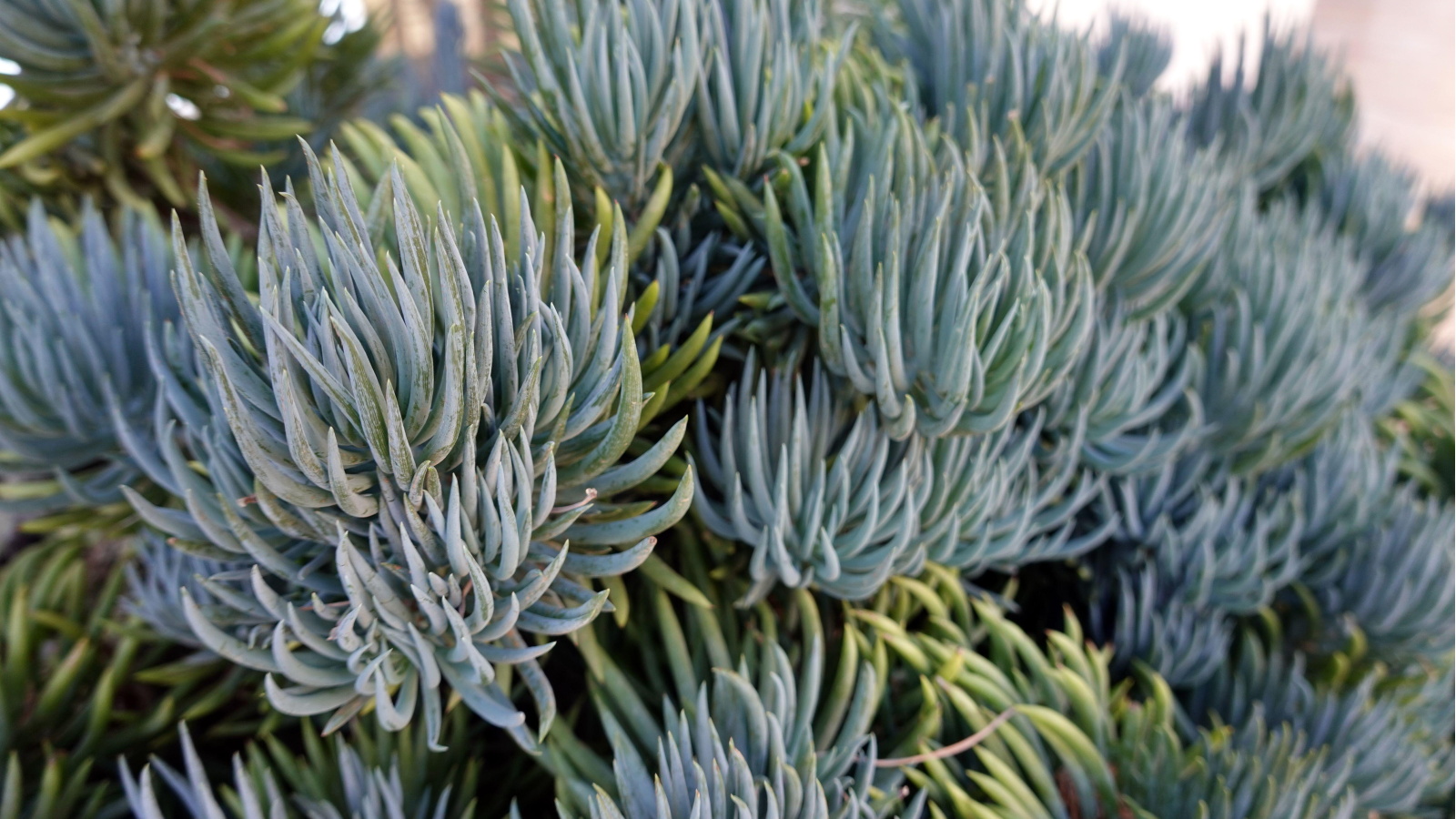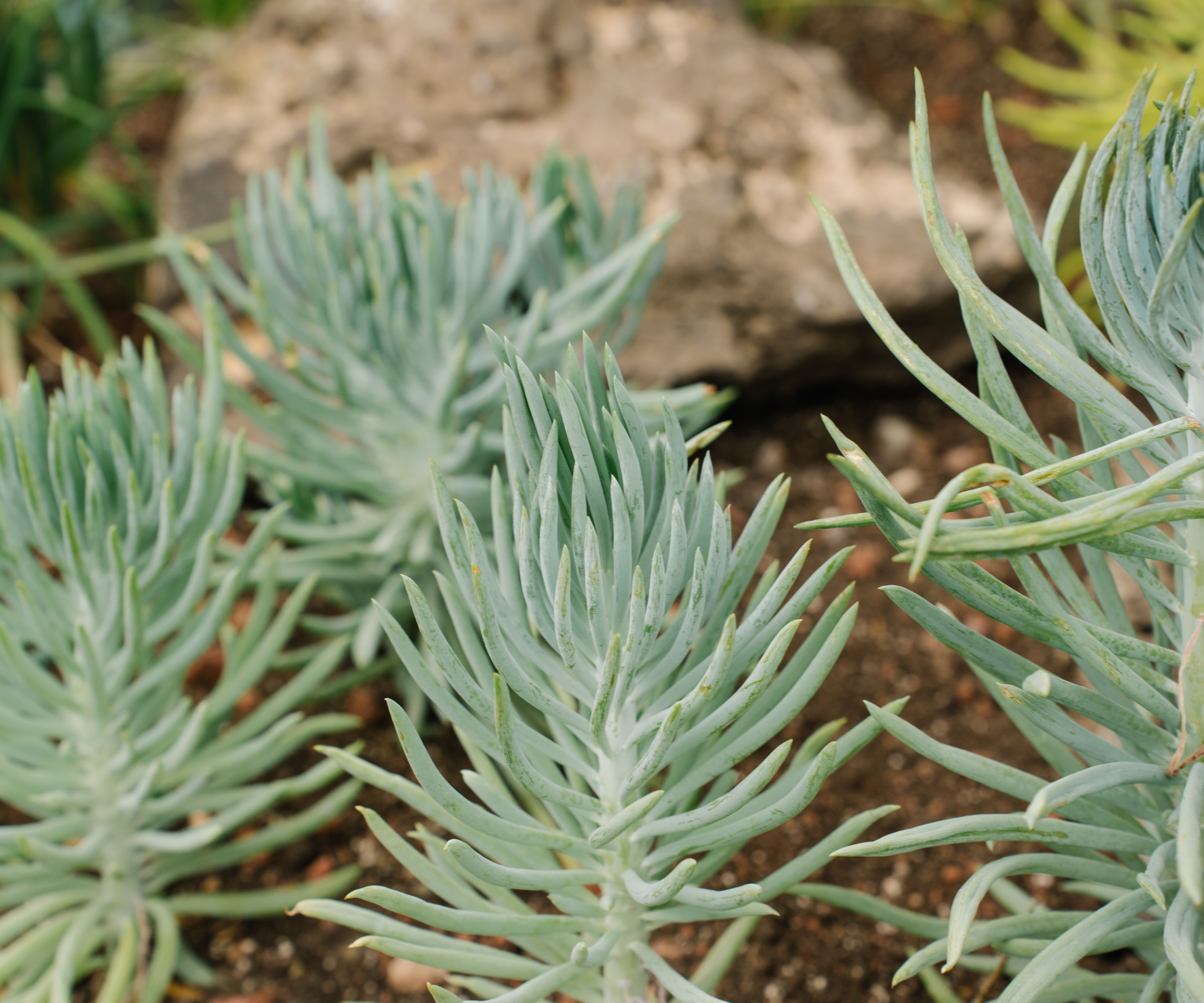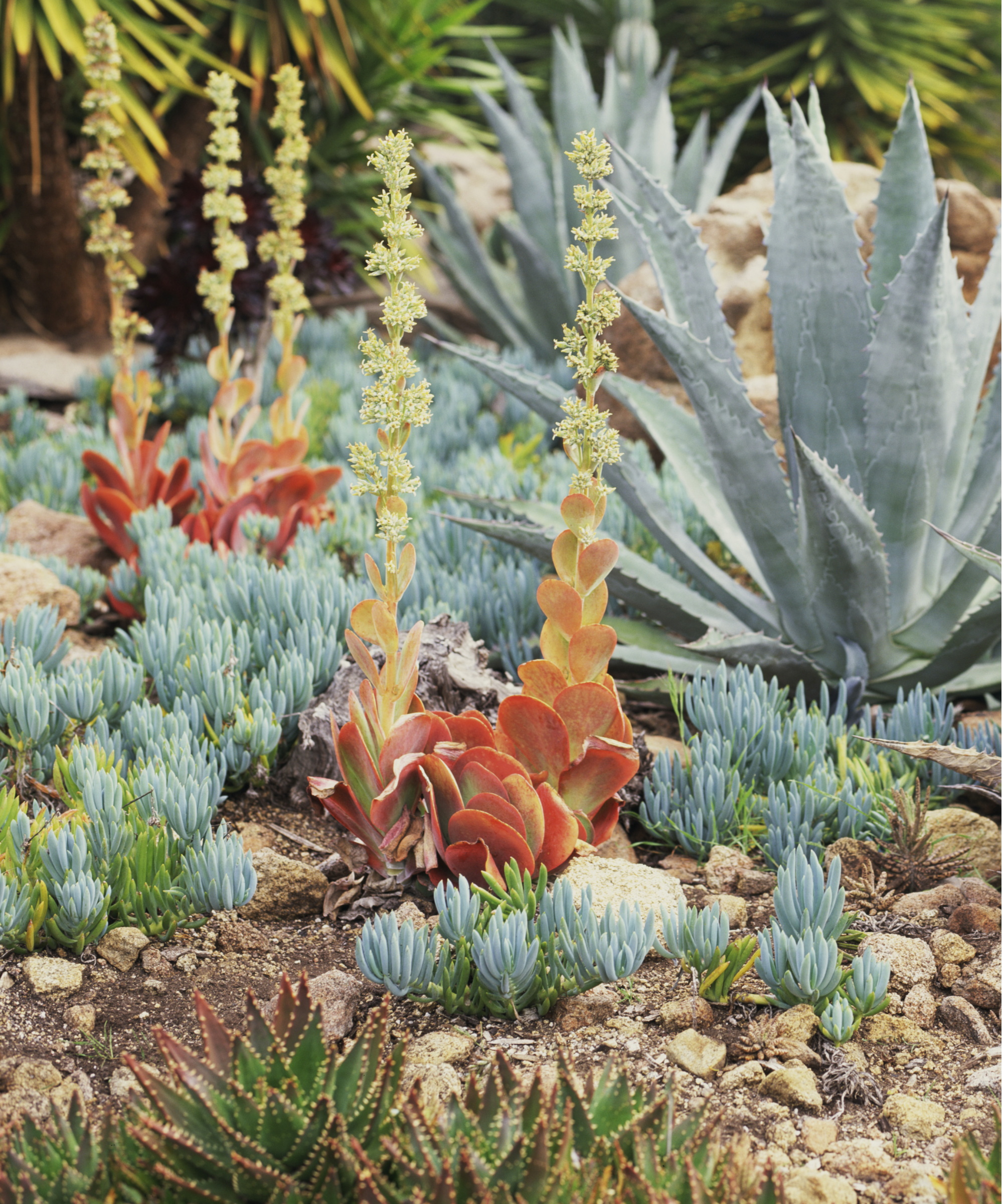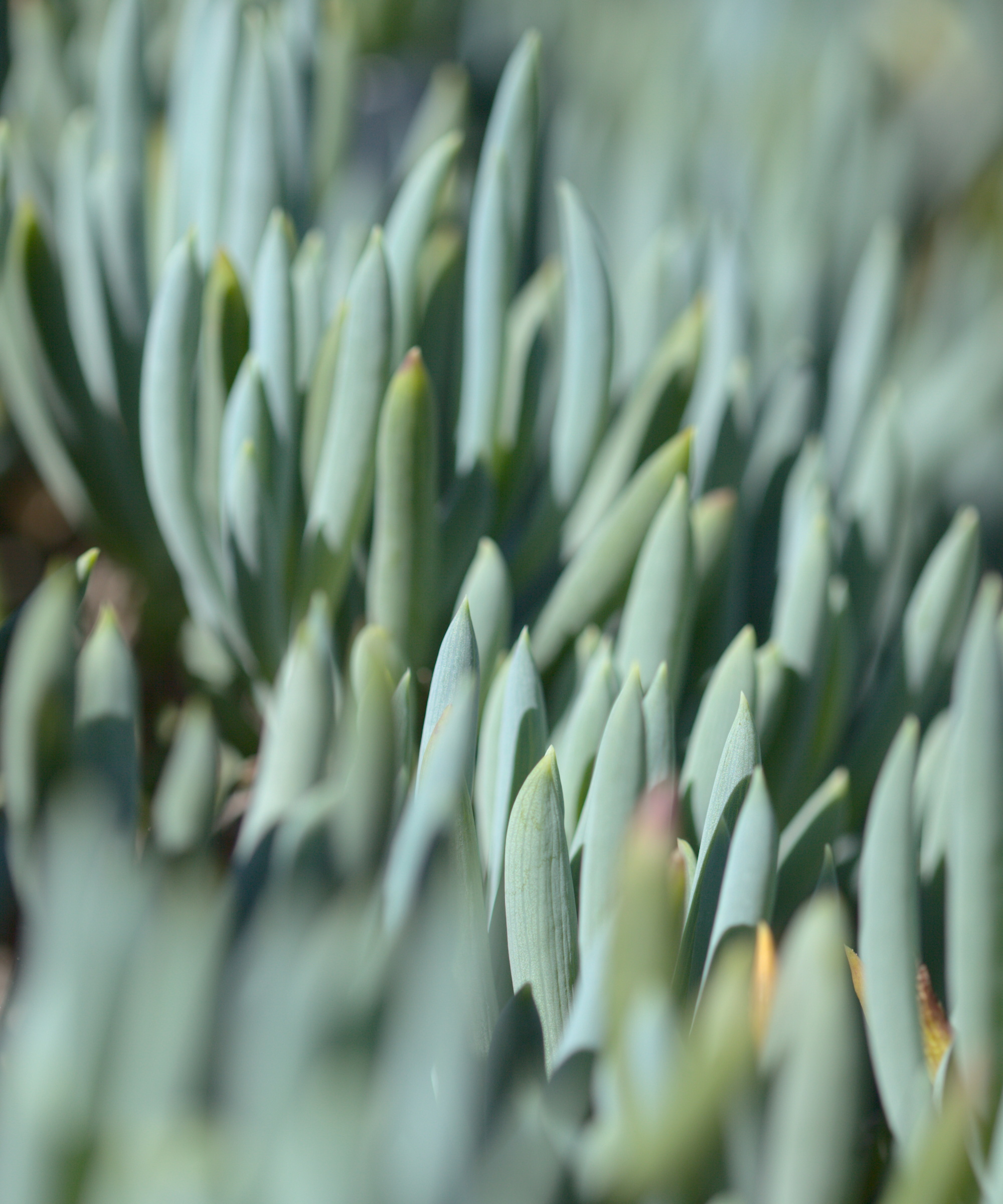
When you first start to explore the wonderful world of succulents, you're likely to be amazed at the vast number of different types that exist. The joy of this is there are so many unique shapes, textures, and colors to choose from, making succulents some of the most versatile plants to work with. Among one of the most striking is the blue finger succulent, or Senecio mandraliscae.
Native to South Africa's Cape region, this type of indoor succulent can also be grown outdoors. It's often known as blue chalk sticks and is a drought-tolerant, flowering evergreen. Outdoors, you can find many gardeners using blue finger succulent for landscaping, creating an impressive and dense mat. Indoors, this succulent is a popular choice for succulent arrangements on windowsills and coffee tables.
Whether you choose to grow blue finger succulent indoors or outdoors, this is one of the best types of succulent to grow for a low-maintenance, dazzling display. Here, experts share top tips for successful growing.

How to grow blue finger succulent outdoors
You might choose to grow blue finger succulent outdoors if you're keen to landscape with succulents and cacti, as these succulents are perfect for ground cover, borders, and containers. Although, it's worth noting you do need to live in warmer climates to grow this succulent outdoors successfully:

- US hardiness zone: Blue finger succulent is hardy across US hardiness zone 10-11 and thrives best in warmer climates. As a plant native to South Africa, it's no surprise it needs higher temperatures to thrive. 'It does best in temperatures between 65°F and 80°F,' says plant expert Ashraf Hajiyev from Toy Florist. Anything below 50°F is likely to kill it off, so this isn't a succulent that can survive frost or be grown outdoors in winter. 'Keep it cozy indoors during colder months, and it’ll reward you with healthy, happy leaves,' Ashraf advises.
- Light: When deciding on a position for your outdoor blue finger succulent, it's best to choose somewhere it will receive plenty of indirect sunlight. 'Senecio mandraliscae, likes a lot of indirect sunlight but will also tolerate some direct sunlight,' says plant nursery expert Tammy Sons. Too much light may cause sunburn and discolor the leaves of blue finger succulent, while too little light may cause it to become limp.
- Soil: The best type of soil to use for succulents is one that is well-draining to prevent their shallow roots becoming oversaturated. Some soil types that would work well include sandy and loam soil. If you're growing this succulent as part of a container garden, you can even make your own succulent potting mix. Alternatively, you can purchase succulent soil online, like this one from Amazon.
- Watering: Knowing when to water succulents can be tricky, but a general rule of thumb is to let your blue finger succulent's soil dry completely before watering it again. Of course, outdoors your succulent may also be watered by rain, reducing the need for you to water it. It's best to always check the soil before watering, such as with this soil moisture meter from Amazon.
How to grow blue finger succulent indoors
Caring for succulents indoors is just as straightforward as growing them outdoors. However, there are a few differences you need to keep in mind when growing blue finger succulent indoors:

- Light: Just like growing blue finger succulent outdoors, your indoor blue finger succulent needs plenty of indirect sunlight. 'Aim for six to eight hours a day near a sunny window, but avoid harsh afternoon rays which may cause sunburn and leaf scorch,' advises Ashraf. When caring for succulents in winter, it can be tricky to provide sufficient light, due to days being darker. You might find it useful to set your blue finger succulent under a grow light for houseplants during winter, for this reason. This grow light from Amazon has a timer function so you don't have to worry about turning it on and off.
- Temperature: As mentioned, the ideal temperature for blue finger succulent is between 65°F and 80°F, but it will get along fine with average room temperatures, too. Something to note, however, is this isn't a cold-tolerant houseplant. 'Keep it away from drafts and extreme cold,' Tammy advises. This includes keeping it away from cold windows in the colder months. In temperatures too cold, you're likely to notice your succulent turn yellow, brown, and even black.
- Planter: You need to house your blue finger succulent in the right type of pot when growing it indoors as a houseplant, as well as outdoors in a container. Like other succulents, blue finger succulent needs good drainage. Opting for plant pots with drainage holes (like this one from Walmart) is ideal. Pair this with well-draining potting mix to provide your succulent houseplant with an optimal growing environment.
- Watering: Avoid succulent mistakes by allowing your blue finger succulent's soil to dry out between watering. 'This will help prevent houseplant root rot,' Tammy notes. Overwatering may cause the blue hue of this succulent turn yellow and the leaves may become limp and soft. Just like outdoors, either use a soil moisture meter or your finger to check how dry the soil is before watering.
FAQs
Does blue finger succulent need fertilizing?
Although succulent fertilizer (available at Amazon) can be useful for providing succulents with a boost of essential plant nutrients, blue finger succulent doesn't rely on fertilizer to grow well. Generally speaking, these succulents thrive just by taking up nutrients from their soil, as well as sunlight. Nevertheless, you can fertilize this succulent during the warmer months when it's actively growing.
Why is my blue finger succulent losing its color?
Blue finger succulent, also known as blue chalk sticks, have an iconic blue hue that makes them so popular. You might notice your succulent losing this color if it is growing in the incorrect lighting. Too little light and its color made fade, too much light and it may become sunburned. Another cause could be incorrect watering and a lack of drainage, often turning the leaves yellow or brown.
As with most succulents, blue finger succulent is easy to care for once you take some time to understand its natural growing environment and replicate this in your home or yard. If you find your blue finger succulent is struggling, don't panic. It's possible to take steps to revive a succulent by making a few simple care adjustments.







